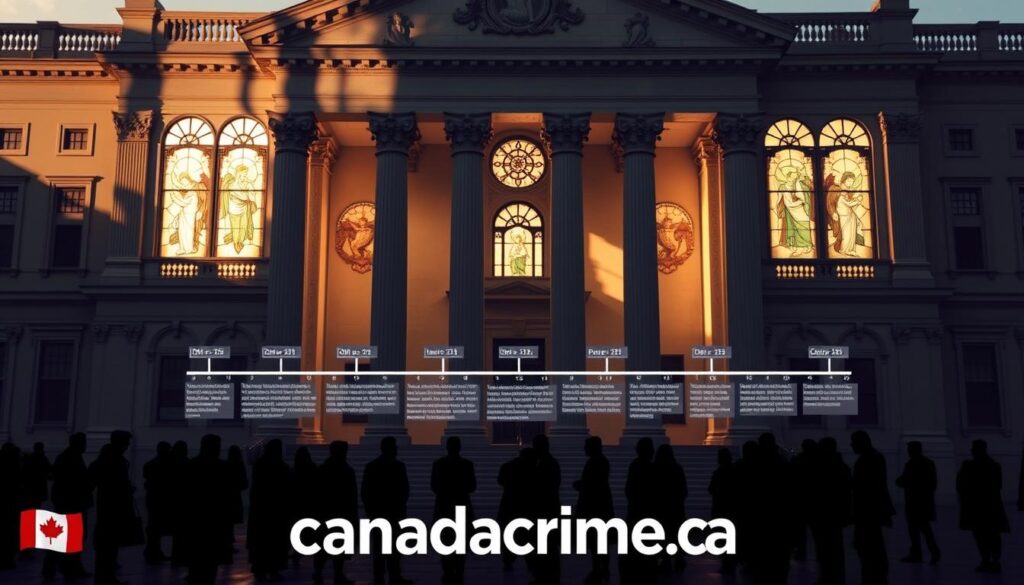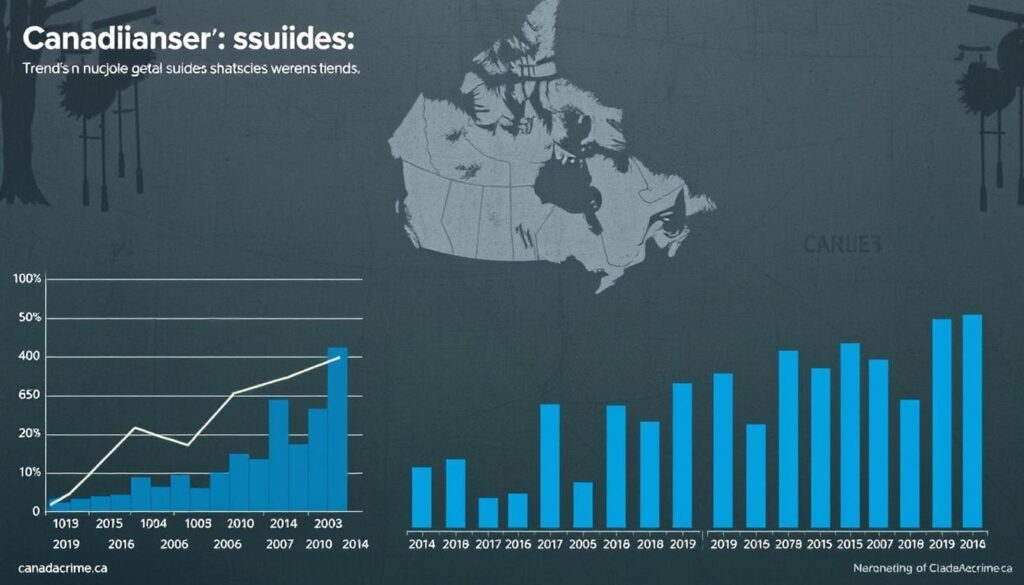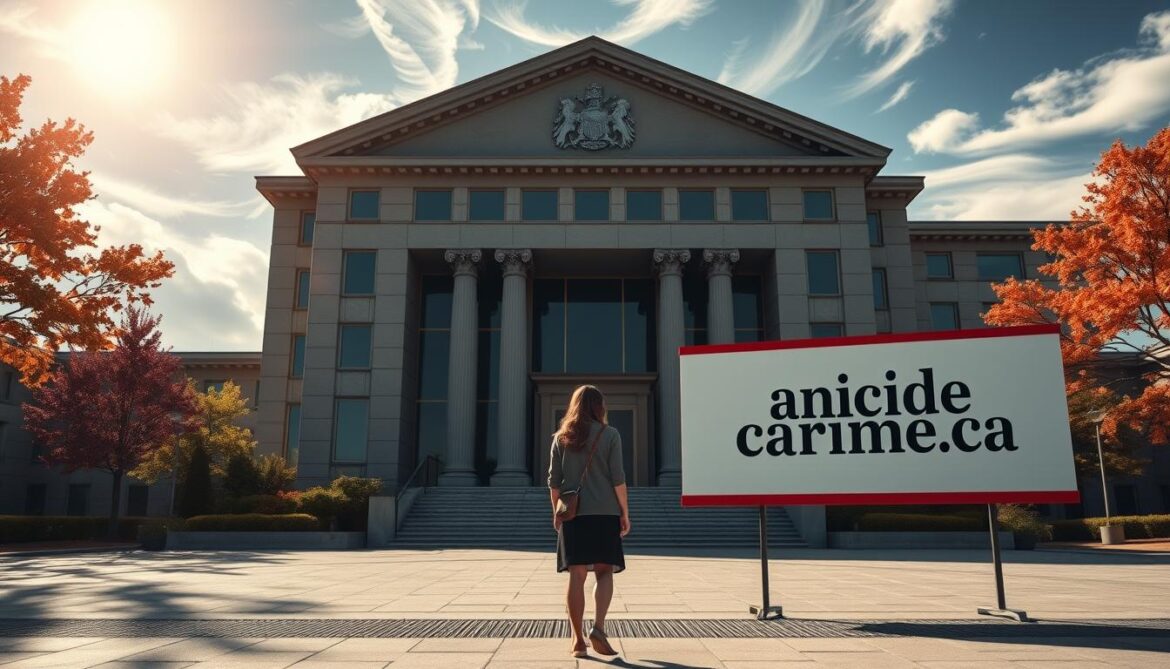Over 4,500 lives were lost to intentional self-harm in Canada last year, yet no one faced charges for those acts. This startling reality reflects a legal shift that began in 1972, when lawmakers removed penalties for personal attempts to end one’s life. But what happens when others become involved?
Canada’s Criminal Code draws a sharp line between personal choice and external influence. While individuals haven’t faced prosecution for their own actions since the 1970s, assisting someone else carries severe consequences. Section 241 specifically prohibits counseling or aiding another person’s death, with penalties reaching 14 years imprisonment.
Legal experts continue debating where compassion ends and criminal liability begins. Recent cases highlight tensions between personal autonomy and state protection of life. You’ll discover how terms like “medical assistance in dying” create new complexities in these discussions.
Key Takeaways
- Personal attempts to end life haven’t been punishable since 1972
- Assisting others remains illegal under Section 241 of the Criminal Code
- Healthcare providers have specific legal protections for end-of-life care
- Courts balance individual rights with public safety in related cases
- Legal consequences for counseling charges can include lengthy prison terms
Understanding Suicide in Canada
Intentional self-harm remains a critical public health challenge, affecting thousands annually. Canadian authorities define it as “a deliberate act to end one’s life”, emphasizing mental health complexities rather than criminal intent. This approach shapes how communities address prevention and support.

Defining Suicide and Its Implications
Experts highlight three key elements: intent, action, and outcome. Data shows men account for 75% of such deaths nationally, revealing stark gender disparities. These patterns influence how care providers tailor prevention strategies across demographics.
The Role of Social and Legal Perceptions
Society increasingly views affected individuals through a health-focused lens rather than moral judgment. Legal frameworks prioritize connecting people with mental health resources over punitive measures. Day-to-day challenges include identifying warning signs and ensuring accessible care.
Healthcare systems play a dual role – offering crisis intervention while navigating ethical dilemmas. Recent policy updates mandate training for frontline workers to improve daily support quality. Community programs now integrate legal safeguards with psychological assistance, creating safer spaces for vulnerable populations.
Historical Context and Legal Evolution
A pivotal legal shift in 1972 transformed how Canadian law addresses personal choices about life. Before this change, people faced prosecution for attempting to end their lives. The removal of penalties marked a turn toward healthcare solutions over criminal punishment.

The Decriminalization Journey Since 1972
Lawmakers recognized mental health crises needed care, not courts. Over time, policies shifted focus to prevention programs and crisis support. By 2016, new frameworks emerged for medical assistance dying, creating clear rules for end-of-life decisions.
Key Changes in the Criminal Code
Revisions introduced strict guidelines for assistance dying scenarios. Healthcare providers gained protections when following specific protocols:
- Two independent doctors must confirm eligibility
- Patients must give informed consent repeatedly
- Requests undergo mandatory 10-day reflection periods
These updates distinguish lawful medical assistance from prohibited acts. Legal terms like “die suicide” now apply only to unauthorized interventions, ensuring clarity in complex cases.
Is suicide a crime in canada
Many believe urban legends about personal choices regarding life’s end. Let’s separate fact from fiction using data from Canadian researchers and legal experts.

Debunking Common Myths and Misconceptions
Myth: Written explanations determine legal outcomes. Studies by psychologist Dr. Antoon Leenaars reveal only 25-30% of cases involve a note. Authorities never require this documentation for investigations.
Myth: Winter months increase risks. Statistics Canada data shows consistent rates year-round. December actually sees lower numbers than spring months in most provinces.
Legal experts clarify that personal acts of dying haven’t carried penalties since 1972. However, discussing assistance remains strictly regulated. A request for support during crises doesn’t create liability if handled properly through healthcare channels.
“The absence of a letter doesn’t negate someone’s struggles – it highlights communication barriers we must address.”
Understanding these truths helps you recognize when myths distort reality. Next, we’ll examine specific laws governing third-party involvement.
Legal Aspects of Counselling and Aiding Suicide
Section 241 of Canada’s Criminal Code imposes strict rules about helping others end their lives. You face up to 14 years imprisonment for counseling someone or providing the means to do so. This applies even if no death occurs.

Overview of Section 241
The law prohibits three key actions:
- Encouraging someone to die
- Helping plan the act
- Providing tools like drugs or weapons
Courts consider your intent and the victim’s mental state. A 2019 case saw 8 years given for selling lethal chemicals online. Counselling or aiding suicide charges require proof of direct involvement.
| Action | Legal Status | Requirements |
|---|---|---|
| Texting “kill yourself” | Illegal | Proof of intent needed |
| Medical MAID process | Protected | Two doctor approvals |
| Selling poison | Criminal offense | 14-year maximum |
Exemptions for Medical Practitioners
Healthcare teams follow strict protocols. A psychiatrist must confirm the person’s decision-making capacity first. Legal protections apply only when:
- Patient meets MAID criteria
- Multiple witnesses verify consent
- No external pressure exists
Non-medical individuals lack these safeguards. Even family members risk charges if they provide unauthorized help. Always consult legal counsel before discussing end-of-life options.
Health Care and Medical Assistance in Dying
Canada’s medical assistance dying (MAID) framework balances patient autonomy with legal safeguards. You’ll find precise term definitions govern every step, from initial requests to final procedures. Strict protocols ensure only eligible individuals receive this care while protecting healthcare teams.

Eligibility and Safeguards for Medical Assistance
To qualify, patients must meet three core criteria:
- Have a grievous medical condition
- Show irreversible decline in capability
- Provide informed consent through multiple stages
A mandatory 10-day reflection period follows the initial request. Two doctors independently confirm eligibility, preventing rushed decisions. Legal exclusion applies if there’s any doubt about mental competence or external pressure.
How Health Care Providers Navigate the Legal Framework
Medical teams follow a 6-step commission process:
- Patient submits written request
- Doctors assess eligibility
- Witnesses verify voluntariness
- Final consent obtained
- Procedure scheduled
- Documentation filed
Legal protections shield providers who follow these steps. A 2023 case saw charges dismissed due to proper adherence to term requirements. However, deviations from protocols risk criminal liability – even accidental errors.
Recent updates clarify exclusion rules for mental health cases. Providers now undergo annual training to maintain compliance. This structured approach maintains trust while preventing misuse of end-of-life options.
Impact on Individuals and the Community
Every life lost creates ripples across families, workplaces, and neighborhoods. Understanding these effects helps communities develop purpose-driven responses that address both immediate crises and long-term healing.

Psychological Factors Behind Suicidal Behavior
Feelings of hopelessness often stem from untreated mental health conditions or overwhelming life stressors. Research shows 60% of those struggling report social isolation as a key factor. Financial strain, relationship conflicts, and chronic pain also play roles in shaping someone’s purpose for seeking escape.
Canada’s Roots of Hope model tackles these root causes through five pillars: safety planning, public education, specialized care, research, and community training. This code of conduct ensures support systems address unique local needs while maintaining national standards.
Community Resources and Support Systems
Effective prevention requires a coordinated way of connecting people to help. Crisis lines like 988 offer 24/7 listening services, while mobile response teams provide in-person care within hours. Schools and workplaces now train staff to recognize warning signs through programs like SafeTALK.
Local initiatives often follow these steps:
- Identify high-risk groups through data analysis
- Partner with cultural organizations for tailored outreach
- Train volunteers in de-escalation techniques
By aligning resources with proven strategies, communities build resilience against future crises. Your involvement in these efforts – whether through donations or advocacy – strengthens the social fabric that protects vulnerable members.
Analyzing Case Studies and National Data
Recent data reveals shifting patterns in self-harm incidents across Canadian provinces. Statistics Canada reports a 12% increase in such acts between 2019-2023, with notable variations by region and age group.

Review of Canadian Statistics
Alberta’s 2022 health records show 23% of patient cases involved repeated hospital visits before fatal outcomes. Key fact patterns emerge:
- Urban centers report higher attempt rates
- Rural areas face 40% fewer support resources
- Youth incidents doubled since 2015
Mortality Comparisons
Statistics Canada’s latest date range analysis shows self-harm accounts for 2.5x more deaths than homicide nationwide. This table clarifies annual averages:
| Cause | Deaths/Year | 5-Year Trend |
|---|---|---|
| Intentional self-harm | 4,100 | +8% |
| Homicide | 1,650 | -3% |
| Accidents | 13,200 | Stable |
“The data tells us prevention requires targeted approaches – what works in Toronto won’t necessarily help Nunavut.”
Emergency room records show 38% of patients who survive an act receive follow-up care within 7 days. Updated tracking systems now capture real-time date markers to improve intervention timing.
Legal Comparisons: Suicide, Infanticide, and Manslaughter
Canadian law treats life-ending actions differently based on context and intent. You’ll find distinct legal categories for self-directed acts versus those impacting others. These distinctions shape how courts assess responsibility across community settings.
Understanding Related Offences Under Canadian Law
Three offences show how intent alters legal outcomes:
| Offense | Legal Definition | Maximum Penalty |
|---|---|---|
| Infanticide | Mother causes newborn’s death during mental disturbance (Section 233) | 5 years |
| Manslaughter | Unintentional death from reckless/negligent acts | Life imprisonment |
| Assisted Suicide | Aiding another’s death (Section 241) | 14 years |
Your province influences sentencing practices. Alberta courts often impose stricter manslaughter penalties than Quebec. Rural community cases sometimes receive more leniency if support resources were lacking.
Key differences emerge in how the law treats involved party members:
- Only mothers face infanticide charges
- All participants risk manslaughter charges
- Non-medical assistants violate Section 241
A 1st offence infanticide case might result in probation, while repeat offenders could face maximum sentences. Contrast this with manslaughter – even initial convictions often bring decade-long terms.
“The law recognizes that not all life-ending acts carry equal moral weight. Context determines culpability.”
These comparisons help you understand how location, intent, and province-specific norms shape legal outcomes. Always consult counsel when navigating these complex distinctions.
Conclusion
Canada’s legal approach to life-ending acts reveals decades of evolving priorities. The 1972 decriminalization marked a result of shifting from punishment to healthcare solutions. Comparisons with homicide rates show distinct patterns – self-harm deaths triple those of unlawful killings annually.
Accurate content about legal boundaries helps communities address prevention effectively. Statistics Canada data underscores how misinformation worsens societal loss. Families experience ripple effects long after initial crises, requiring sustained support networks.
Legal frameworks now balance compassion with accountability. While assisting others remains prohibited, medical protocols protect ethical end-of-life care. These developments highlight Canada’s nuanced response to complex human struggles.
For deeper insights into criminal law comparisons and policy updates, explore canadacrime.ca. Our resources help you navigate Canada’s justice system with clarity and precision.

